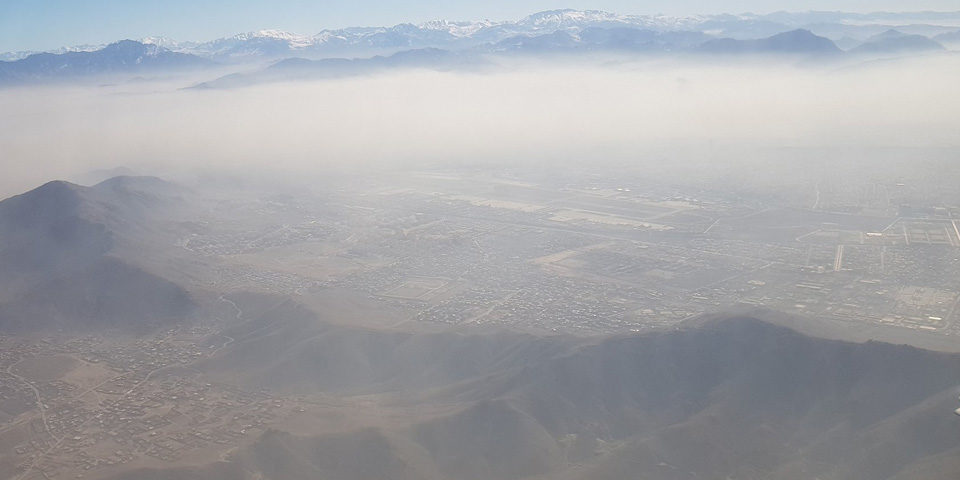Kabul, Afghanistan – Residents of Kabul are confronting dangerously high air pollution levels today, with the city ranking among the top 10 most polluted worldwide. Fine particulate matter (PM2.5) concentrations have surged to 58 micrograms per cubic meter (µg/m³), more than 11 times higher than the World Health Organization’s recommended safe limit.
Health Risks and Advisory
Health authorities are urging residents—particularly children, the elderly, and individuals with respiratory conditions—to limit outdoor activities and take precautions if they must go outside. Experts warn that prolonged exposure to elevated PM2.5 levels can cause respiratory illnesses, cardiovascular problems, and other long-term health complications.
Causes of Pollution
The spike in pollution is attributed to multiple factors, including increased vehicular emissions, construction dust, and the widespread use of coal and wood for heating. Adverse meteorological conditions have exacerbated the situation by trapping pollutants in the lower atmosphere, resulting in poor air quality across the city.
Outlook and Recommendations
Encouragingly, forecasts indicate that air quality may improve later in the day as winds disperse accumulated pollutants. Authorities recommend wearing masks when outdoors, keeping windows closed, and staying updated via air quality monitoring apps and local health advisories.
Kabul’s air pollution challenges reflect a broader regional issue affecting many cities in South and Central Asia, where rapid urbanization, industrial activity, and climate factors contribute to hazardous air quality.

